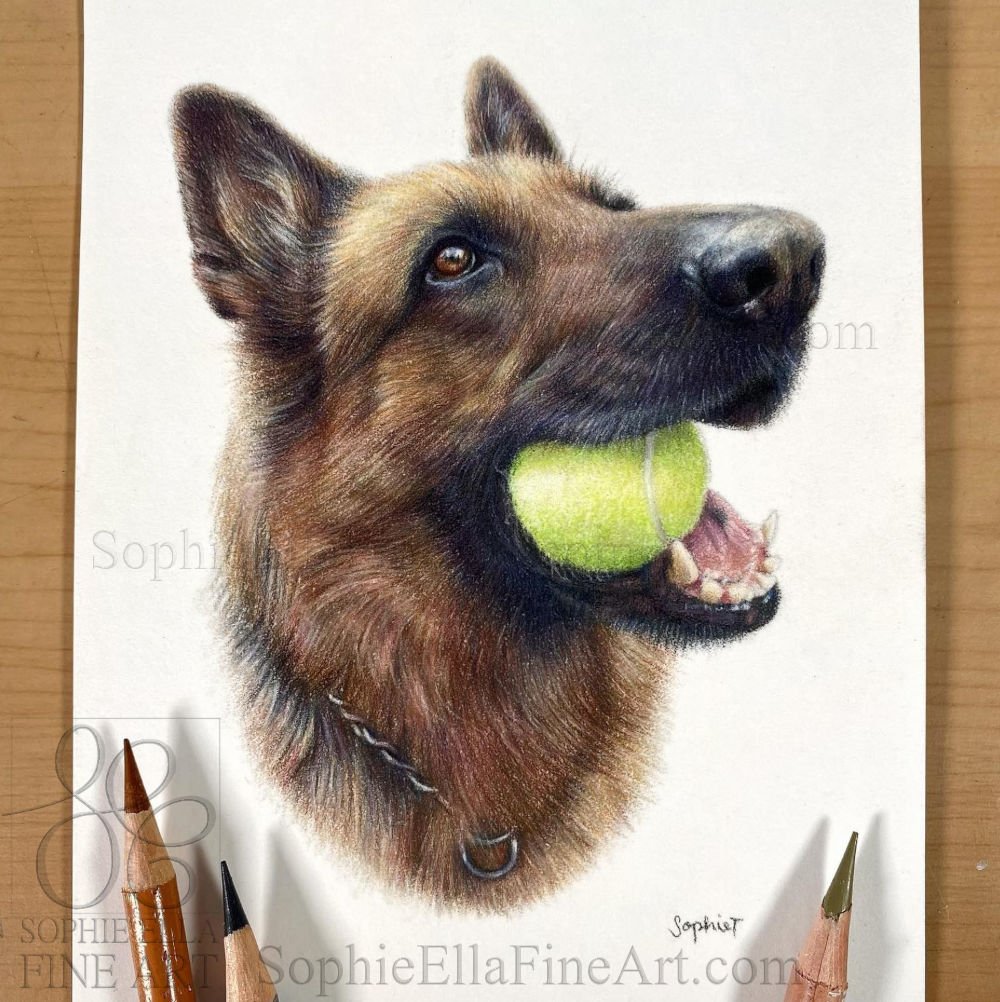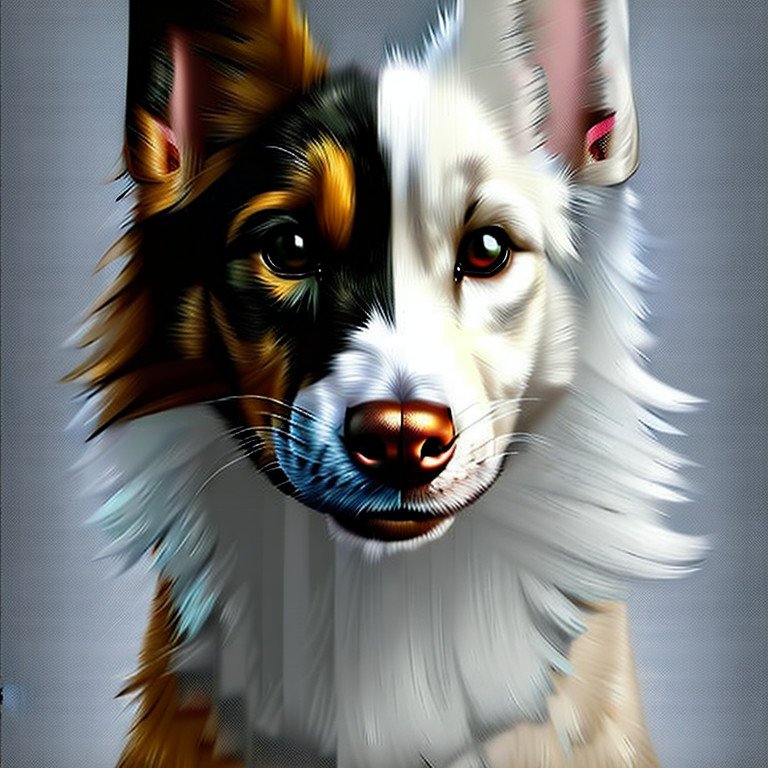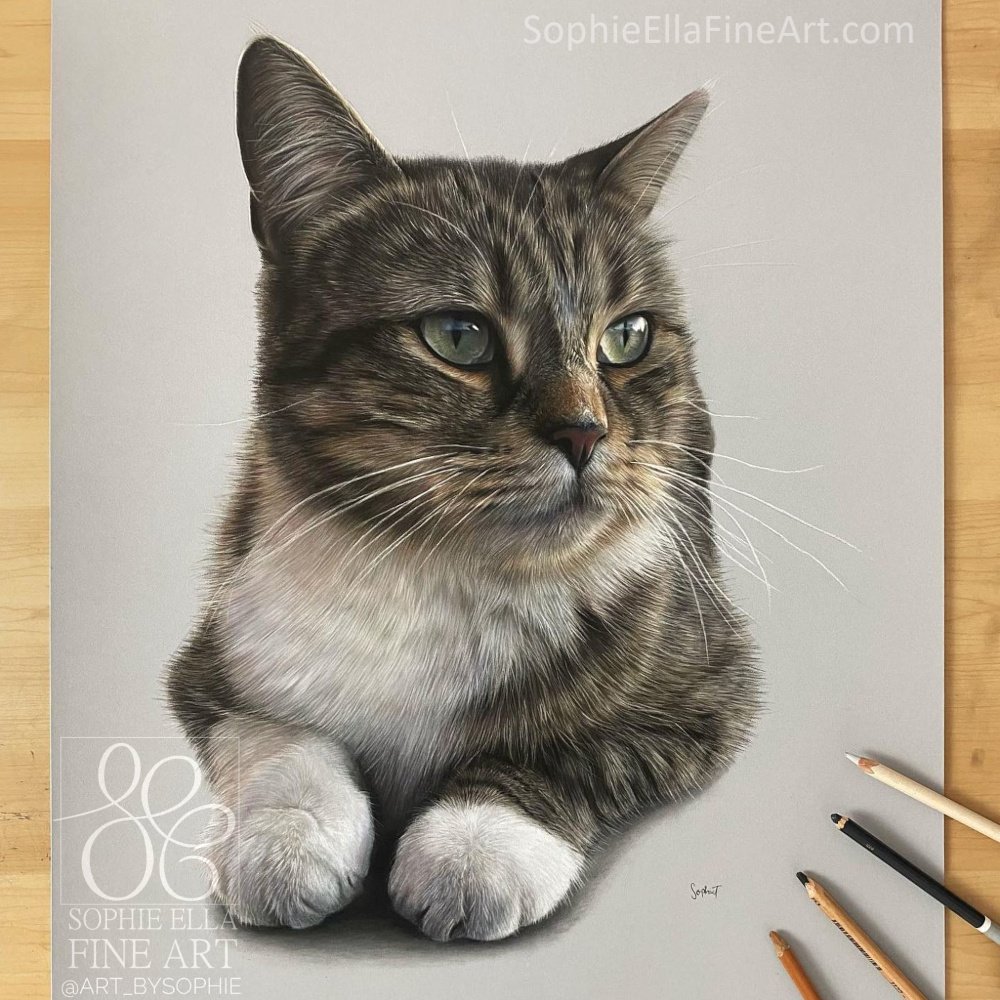The history of pet art
Introduction
I’ve always loved drawing animals, so I’m really enjoying being a pet portrait artist. I thought, therefore, that it would be interesting to see how long people have been drawing pets. As it turns out, quite long time!
Pets have been a part of our lives for thousands of years, serving as loyal companions and sources of comfort and entertainment. It probably shouldn’t have come as that much of a surprise, therefore, to find that our furry, feathered, and scaled friends have been the subject of countless works of art throughout history. From ancient cave paintings to modern-day sculptures and drawings, pet art has become a much loved and enduring form of artistic expression. Here I explore the fascinating history of pet art, tracing its evolution from ancient depictions of animals to contemporary works that capture the unique beauty and personality of our beloved pets.
Ancient pet art around the world
Ancient animal art can be traced back to the earliest examples of human artistic expression. Cave paintings from over 30,000 years ago, like those found in the Chauvet Cave in France, often depict animals such as bison, horses, and mammoths. While these are not really pets, they would have been very important to early humans. As civilizations developed, and role of animals in our lives evolved, dogs and cats do start showing up quite early in ancient art.
A reproduction of a 36,000 year old cave painting from the Altamira caves in Cantabira, Spain. (Credit Creative Commons 2 Thomas Quine)
30,000 years old cat portraits (well lions) from the Chauvet-Pont-d’Arc caves in France. Creative Commons 4 Claude Valette
In the Indian Bhimbetka rock shelters there is, apparently, a 9,000 years old painting of a man holding a dog on a leash. There are similar depictions of dogs on what seem to be leashes painted on the rocks at Shuwaymis and Jubbah, in north-western Saudi Arabia. By the time of ancient Greece and the Romans, though, things are a lot clearer, with dogs often being featured in artwork, both as hunting companions and as symbols of loyalty and fidelity.
When it comes to cats, there is also evidence for early domestication. For example, around 9500BC a cat was carefully buried with it’s owner in a grave in Cyprus. The Ancient Egyptians initially kept cats for pest control and increasingly depicted them in their art as symbols of protection and fertility. A Egyptian artwork depicting domesticated cats along side humans indicates that they kept them as pets around 4000BC. Not long after that, cats were buried with humans in Egypt indicating a close relationship of some sort. It is now thought that the Ancient Egyptians payed a key role in shaping the character of the cats that share out homes today.
Mosaic fragment of a hunting scene in Mid second century *Roman house showing a dog.© Ad Meskens / Wikimedia Commons
A cat hunting with humans depicted in a mural found the tomb of Nabamun in Thebes-West, dated around 1350 BC.
Other examples of ancient pet art can be found throughout different cultures and time periods. The Moche people (A.D. 200–850) of ancient Peru created ceramic vessels in the shape of animals, including dogs and big cats. In 17th century Japan (and on into the 18th and 19th century), ukiyo-e woodblock prints often featured cats and other animals as playful and mischievous characters. Overall, ancient pet art provides a window into how animals were perceived and valued in different cultures throughout history. These depictions highlight the important role that pets have played in human lives for thousands of years, and demonstrate the enduring appeal of animals as artistic subjects.
Pet art in the Middle Ages
While some people did keep pets in the Middle Ages, they were not as common as they are today, especially among the lower classes. The cost of keeping and caring for a pet was prohibitive for many people but dogs were often used for utilitarian purposes, such as hunting or guarding property. They are, therefore, sometimes included in hunting scenes or as faithful companions to noble figures. Artwork during the Middle Ages was often commissioned by the Church so animals can be found depicted in religious contexts, such as in decorated manuscripts and church carvings.
Fun fact: In the middle ages from around the 14th century to the 19th century, churches sometimes employed “dog whippers” whose job was to keep dogs from causing trouble during church services. The dogs were either strays or those that had followed their owners to the church. Dog whippers sometimes doubled as “sluggard whackers” who hit dozing worshipers on the head with a long pole so they didn’t miss the sermon.
A late 15th Century pen and ink illustration of a cat being chased up a tree by a man and his dogs (from www.worldhistory.org).
Dog whippers chasing dogs out of the church.
An illumination by late-medieval artist Simon Bening, including a dog which some think was his own as it appeared so often in his paintings (from blogs.getty.edu).
Sculpture of dog whipper, or hondenslager, in Grote Kerk, Haarlem. Photo: Jane023/Wikimedia
The rise of pet ownership in the 18th and 19th centuries
In Europe, the 18th and 19th centuries saw a significant rise in pet ownership among the middle and upper classes. As people began to move away from rural areas and into cities, pets such as dogs and cats became popular companions and status symbols.
With this rise in pet ownership came an increased demand for pet portraits and other forms of pet art. Wealthy families would commission artists to create paintings and sculptures of their beloved pets. One of the most famous pet artists of this time was Sir Edwin Landseer, a British painter known for his realistic and life-like depictions of dogs. His works were incredibly popular, and helped to popularise the practice of pet portraiture.
Dog portrait painted by Sir Edwin Landseer (1802–1873)
Study of a Dog Lying Down by Sir Edwin Landseer (1802–1873)
In addition to formal portraits, pet art from this time also included a variety of other mediums, such as prints, figurines, and even furniture. Overall, the 18th and 19th centuries marked a turning point in the history of pet art, as pets became more valued and celebrated as members of the family. This era helped to establish the enduring popularity of pet art as a form of artistic expression that captures the unique beauty and personality of our animal companions.
20th century pet art
Many famous artists have had pets and many of those liked to draw them but the 20th century marked a period of particular experimentation and innovation in the world of pet art. With the advent of modernism and abstract art movements, artists began to explore more stylized and unconventional depictions of pets.
One notable example of this shift can be seen in the work of Pablo Picasso, who often incorporated animals into his paintings and sculptures. He loved to draw his Dachshund called Lump and his famous painting, "Dora Maar au Chat," features his muse, Dora Maar, with a cat perched on her shoulder. (Partly to avoid copyright issues and partly to illustrate modern digital techniques I’ve included some AI generated pet portrait art.)
Dora Maar au Chat, Pablo Picasso (1881–1973)
AI generated abstract cat portrait
AI generated abstract dog portrait
Other artists of the 20th century created unique works of pet art by experimenting with different mediums, such as photography or mixed media. For example, William Wegman became famous for his photographs of Weimaraner dogs dressed up in human clothing. Artists such as Jeff Koons and Yoshitomo Nara created large-scale sculptures of dogs and other animals, while contemporary artists such as Laurel Burch and Dean Russo incorporate bold colours and patterns into their pet portraits.
Overall, the 20th century marked a period of transformation in the world of pet art, as artists broke away from traditional depictions of pets and explored new and unconventional ways of capturing their beauty and personality.
Contemporary pet art
Contemporary pet art continues to evolve and expand, with artists using a wide variety of mediums and techniques to capture the unique beauty and personality of our animal companions. One trend in contemporary pet art is the use of digital media. With the rise of digital technology, artists are now able to create stunning and realistic depictions of pets using software programs and digital tools. Digital pet portraits can be printed on a variety of materials, such as canvas, metal, and acrylic, and can be easily shared and displayed online.
AI generated digital pet portrait
Another trend in contemporary pet art is the use of mixed media. Artists are now combining traditional mediums, such as paint and ink, with unconventional materials, such as found objects and textiles, to create unique and textured works of art. For example, artist Karen Nicol creates embroidered pet portraits.
AI generated image of a bronze cat sculpture
AI generated image of a bronze cat sculpture
Contemporary pet art also often emphasises the relationship between pets and their owners, and explores the emotional and psychological connections that exist between humans and animals. Contemporary pet art is a dynamic and constantly evolving field, with artists using a wide variety of mediums and techniques to capture the unique beauty and personality of our beloved animal companions.
A quick search for “pet portraits” online reveals dozens if not hundreds of artists currently working to produce portraits of people’s pets. It’s a very competitive field but thankfully the demand remains high with over 10 million dog owners and 11 million cat owners in the UK alone. 66% of US households own a pet and half of the global population is estimated to have a pet at home, so I think we will be kept busy for a long time to come.
Conclusion
Pet art has a rich and varied history, from ancient depictions of animals in cave paintings to the contemporary works of digital art and mixed media. Over time, the portrayal of pets has moved from mere representations of what the animals look like to a celebration of their unique personalities and emotional significance to their owners. As pets continue to play an important role in our lives, pet art remains a powerful way to express the deep emotional connection between humans and animals.
The development of pet art throughout history shows how an appreciation of the beauty and nature of our pets has inspired artists across time and cultures. Pet art is an important and enduring form of artistic expression that celebrates the special bond between humans and animals. Whether it is a formal portrait, a surreal sculpture, or a digital creation, pet art will continue to inspire and captivate art lovers and animal lovers alike for many years to come. I’m so grateful to be doing just that, and hope to have the opportunity to create an artwork for you that you can enjoy for many years to come.
The above are some examples of my work. You can see more artwork and read customer feedback on my review page.


















